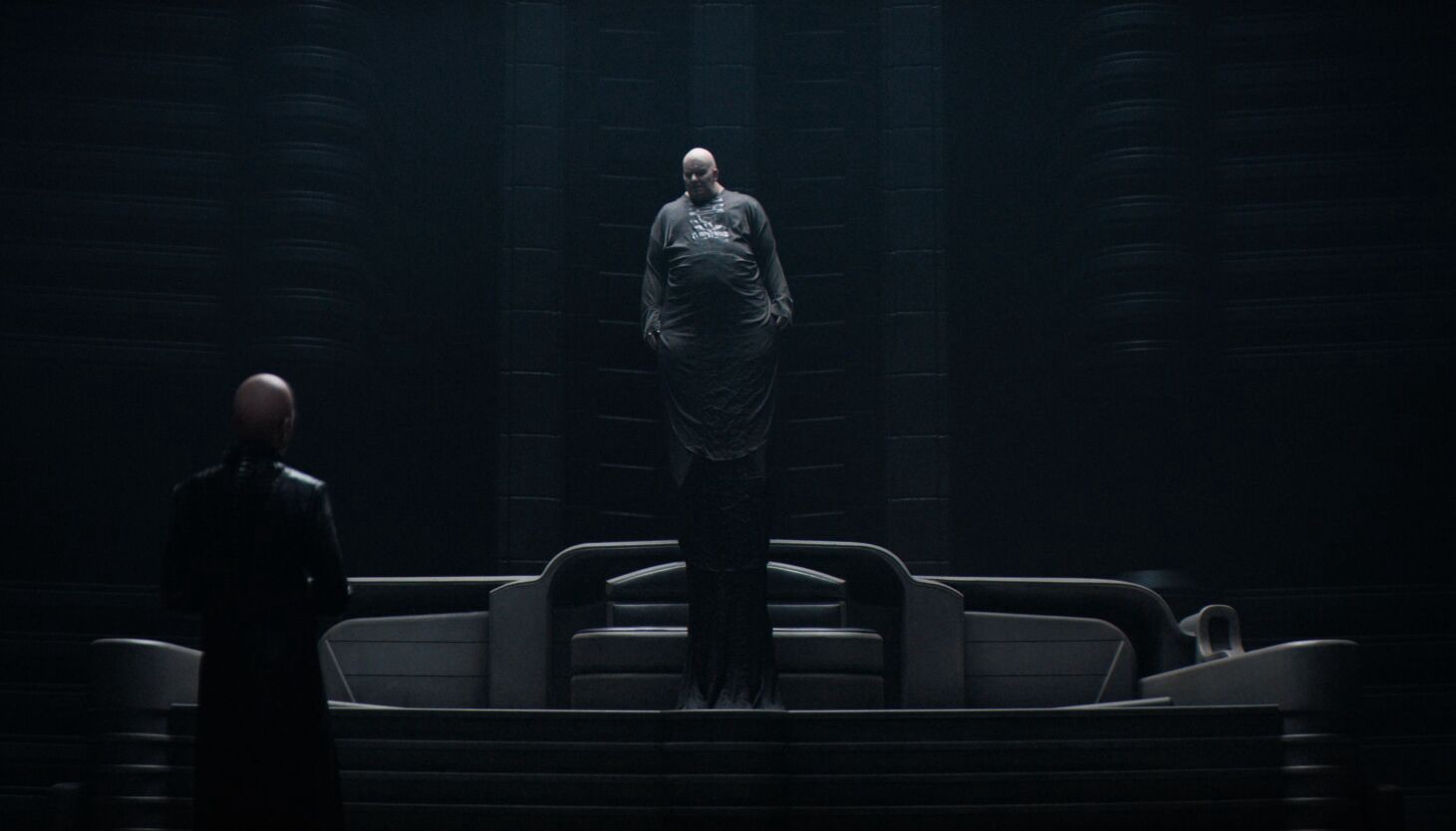In Frank Herbert’s sprawling sci-fi epic “Dune,” Baron Vladimir Harkonnen stands out as one of the most visually and narratively striking characters. His ability to float using anti-gravity devices called suspensors is emblematic of both his physical presence and his thematic importance. This article explores how and why Baron Harkonnen floats, diving into the technological, character-driven, and thematic aspects of this feature.
Technological Underpinnings: Suspensors and Holtzman Fields
Baron Harkonnen’s ability to float is facilitated by suspensors, a form of technology that manipulates gravity. These devices operate within the framework of the “Holtzman effect,” a fictional scientific principle that pervades the technology in the “Dune” universe. The Holtzman effect is also responsible for protective shields and interstellar travel, forming a backbone of the saga’s technological infrastructure. Suspensors negate gravity’s pull on certain objects or individuals, allowing them to float or hover at will.
The Science Fiction of Suspensors
Within the rich tapestry of “Dune,” suspensors are a hallmark of advanced technology. Think of them as akin to having a personal anti-gravity field that can be activated at will. They are often depicted as small, discrete devices attached to clothing or furniture. This allows not only for human levitation but also for the transportation of heavy objects with ease.
In practical terms, suspensors reflect Herbert’s vision of a future where technology has seamlessly integrated into daily life, offering both convenience and a stark contrast to the harsh realities of the desert planet Arrakis. A real-world parallel might be the evolution of technology to aid mobility, such as motorized wheelchairs and exoskeletons, which enhance human capability and improve quality of life.
Implications of the Holtzman Effect
The Holtzman effect is a fascinating concept that extends beyond suspensors. It is foundational to many of the universe’s technological wonders. For instance, Holtzman shields provide personal and planetary protection, crucial for survival in the politically volatile and dangerous environment of “Dune.” Additionally, Holtzman technology is pivotal in enabling faster-than-light travel through space, known as space folding, which is essential for the galactic empire’s expansion and control.
This central role of the Holtzman effect underscores the theme of relying on technology to overcome natural limitations. However, as with many technological advancements, it comes with potential pitfalls, such as dependency and the ethical considerations of its use for power and control.
Characterization and Physicality: Symbolism of Floating
The physical act of floating serves as a powerful symbol of Baron Harkonnen’s character. It highlights his detachment from the common struggles of humanity, both literally and figuratively elevating him above those around him. This sense of elevation is a direct reflection of his desire for control and dominance over others, fitting his role as the antagonist to the noble Atreides family.
A Portrait of Excess
Baron Harkonnen’s use of suspensors to manage his corpulence underlines themes of excess and corruption. His physical state serves as a metaphor for his moral and ethical corruption, suggesting a man who has indulged every vice to the point of self-destruction. His ability to float can be seen as an unnatural defiance of nature’s laws, mirroring his ruthless, manipulative political strategies.
In the broader context of “Dune,” the baron’s obesity is not merely a physical trait but a calculated narrative device. It symbolizes the dangers of unchecked appetites—be they for food, power, or control. This portrayal evokes classic literary and historical figures whose physical largesse mirrored their moral failings, serving as a cautionary tale about the costs of excess.
The Psychological Impact of Floating
Floating also serves as a psychological shield for the baron. It removes him from the earthly constraints that bind others, allowing him to project an image of invincibility. This physical detachment feeds into his megalomania and his belief in his superiority. It’s a visual representation of his belief that he is above the laws and norms that govern others.
Thematic Implications: Power, Control, and Alienation
Thematically, the baron’s floating ability enhances the narrative of “Dune” by juxtaposing technology’s power to overcome natural human limitations against the moral and ethical implications of such technology. In a universe where characters often face harsh environmental challenges, such as the desert landscape of Arrakis, Baron Harkonnen’s ability to float is a stark reminder of the disparities in access to and use of technology.
The Role of Technology in Power Dynamics
In “Dune,” technology is a double-edged sword. It offers immense power to those who control it but also poses moral and ethical dilemmas. Baron Harkonnen’s use of suspensors is a microcosm of this dynamic. It grants him physical mobility and a psychological edge, reinforcing his status and authority. However, it also isolates him, creating a barrier between himself and the humanity he seeks to dominate.
The baron’s reliance on suspensors reflects a broader theme in “Dune” about the dangers of technology-driven power. The novel explores how technological advancements can exacerbate social inequalities, empower tyrants, and distance individuals from their humanity. This theme resonates with contemporary concerns about technology’s role in society, from surveillance to artificial intelligence.
Alienation and the Human Experience
Baron Harkonnen’s floating separates him from others, not just physically but also socially and ethically. It becomes a clear visual cue of his alienation from the human experience and his god-like view of himself in relation to others. This separation underscores a central theme in “Dune”: the dangers of absolute power and the dehumanizing effects of technological dependency.
In many ways, the baron’s isolation is self-imposed. His detachment from the world around him is both a source of strength and a profound weakness. It allows him to manipulate and control without empathy or remorse, yet it also leaves him vulnerable to the very forces he seeks to dominate. His floating becomes a metaphor for the isolation that comes from the relentless pursuit of power at the expense of human connection.
Expanded Character Analysis: Beyond the Floating Baron
To fully appreciate the baron’s role in “Dune,” it’s essential to consider his character beyond his floating ability. Baron Harkonnen is a master strategist, a ruthless leader whose ambitions extend far beyond physical domination.
Political Machinations and Ruthlessness
Baron Harkonnen’s political savvy is evident in his intricate plots against House Atreides. His ability to float is just one aspect of his arsenal, used to intimidate and assert dominance. His true power lies in his cunning and his willingness to exploit any means to achieve his ends. This makes him a formidable adversary, one who is not bound by traditional moral constraints.
The Influence of Family and Legacy
The baron’s relationship with his family, particularly his nephew Feyd-Rautha, reveals another dimension of his character. He sees Feyd as the heir to his empire, someone who embodies his own ambitions and ruthlessness. This dynamic adds depth to the baron’s character, highlighting his desire to perpetuate his legacy and influence through the next generation.
In this context, his floating can be seen as a metaphor for the weight of his ambitions, which he tries to pass on to Feyd. It underscores the theme of legacy and the lengths to which individuals will go to ensure their mark on the world endures.
Lessons from the Floating Baron
Baron Harkonnen’s floating ability, while a fictional concept, offers real-world insights into the interplay of technology, power, and human nature. Here are some lessons that can be drawn from his character:
- The Double-Edged Sword of Technology: Technology can enhance human capabilities but also create dependencies and ethical dilemmas. It’s crucial to consider the broader implications of technological advancements.
- The Costs of Excess: Unchecked indulgence, whether in power, wealth, or physical appetites, can lead to self-destruction. Balance and restraint are essential for sustainable success.
- The Isolation of Power: Pursuing power without regard for human connection can lead to isolation and vulnerability. It’s important to maintain empathy and relationships, even in positions of authority.
- Legacy and Influence: The desire to leave a legacy can drive individuals to great lengths, but it’s important to consider the impact of that legacy on future generations.
A Lasting Symbol
Baron Vladimir Harkonnen’s ability to float in “Dune” is rich with narrative and thematic significance. Through the use of suspensors, Herbert not only crafts a memorable character trait but also enriches the thematic tapestry of his universe. This feature of the Baron underscores the novel’s exploration of power, technology, and moral decay, making him a profoundly impactful character in the science fiction landscape.
As “Dune” continues to captivate readers and viewers, the image of the floating baron remains an enduring symbol of the complex interplay between human weakness, technological might, and the overarching struggle for power. Baron Harkonnen’s character challenges us to reflect on our own relationships with technology and power, urging us to consider the ethical dimensions of our choices in an ever-evolving world.




